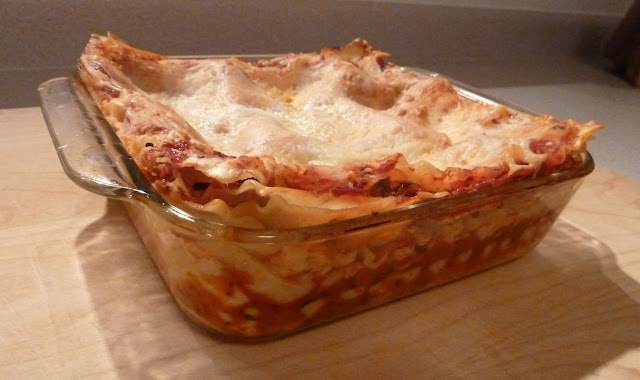Risotto is a classic Italian comfort food consisting of creamy rice and Parmesan cheese. This recipe freshens up the classic for spring with the addition of peas, asparagus, smoked turkey (or ham), mozzarella, and pesto. It's a main dish entree that makes a complete meal when served with a salad.
For some reason I was always mildly intimidated by the thought of making risotto - I guess the process seemed somewhat mysterious and complicated. Turns out if you can use a spoon to stir you can make risotto. Even my friend John, who's been known to oven-roast tomatoes into charcoal briquettes, could handle this one. (John says he put them in the oven, then forgot about them and went out with his buddies for the afternoon. Lucky he didn't burn the house down.)
 |
| John's "oven-roasted" tomatoes |
My tip of the day is how to clean leeks. Leeks are large, mild-flavored members of the onion family that are excellent at trapping dirt as they grow. I learned a great technique a few years ago regarding how to ensure you get them absolutely clean. The trick is to slice them up first, then throw them into a strainer and lower the strainer into a large bowl of cold water. Agitate the water with your hand to remove the dirt, then lift the strainer of clean leeks out of the bowl of water and drain. Presto! Clean leeks. Much easier than trying to rinse them before cutting or trying to fish all the little pieces out of the water individually.
 |
| leeks in strainer in bowl of cold water |
 |
| rinsed and drained |
I think one of the reasons this recipe reminds me so much of spring is because of the wonderful green colors - from light to dark - of the leeks, asparagus, peas and pesto. I hope you enjoy it!
* * click here for a printable recipe version * *
Risotto with Peas, Asparagus and Pesto
Serves 4
Kosher salt
3 leeks (white and light green parts only)
2 tablespoons unsalted butter
1 cup Arborio rice
½ cup dry white wine (optional)
2 cups fresh or frozen asparagus spears cut into 1” pieces
1 cup frozen peas, thawed
¾ cup diced smoked turkey or ham
½ cup pesto
1 cup diced fresh mozzarella
½ cup grated parmesan
pepper
Slice each leek lengthwise and then crosswise into thin slices. Rinse in cold water and drain. To make the broth, bring 6 cups of water and 1 teaspoon of salt to a simmer in a large pot over medium heat. Add the leeks and cook for 3 to 4 minutes; remove with a slotted sp[oon to a bowl. Adjust the heat to keep the broth at a gentle simmer.
Meanwhile, heat one tablespoon of butter in a wide saucepan over medium-high heat. Add the rice and cook, stirring, for one minute. Add the wine and cook, stirring, until almost evaporated, about one more minute. Add two cups of the hot leek broth to the rice and cook, stirring frequently, until almost absorbed, about 6 minutes. Adjust the heat to keep the risotto at a simmer during this process. Add one more cup of broth and cook, stirring, for three more minutes. Add the asparagus to the pot and stir for an additional two minutes, then add the leeks, peas, and one more cup of broth. Cook, stirring, until almost absorbed, about 5-6 minutes. Taste the rice to see if it’s al dente.
Stir in the turkey and remaining one tablespoon of butter. Remove from the heat and stir in the pesto, mozzarella, and parmesan. Taste and season with salt and pepper.






















